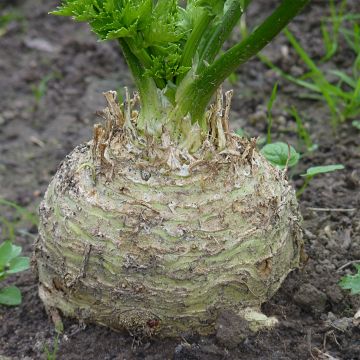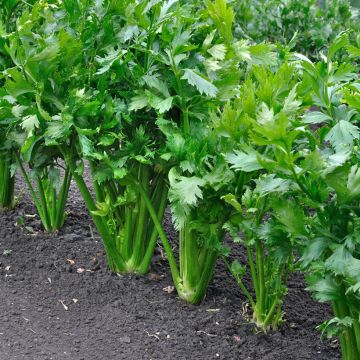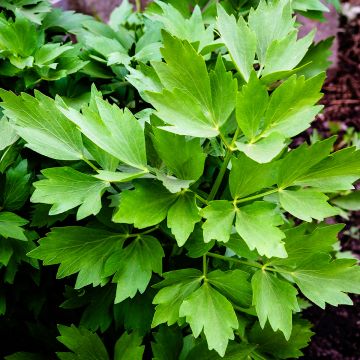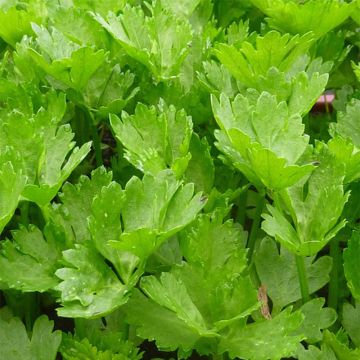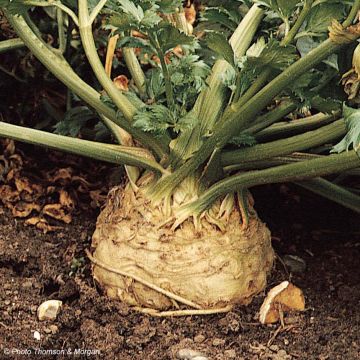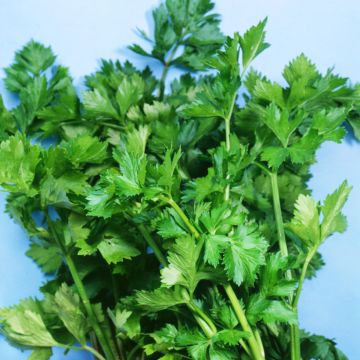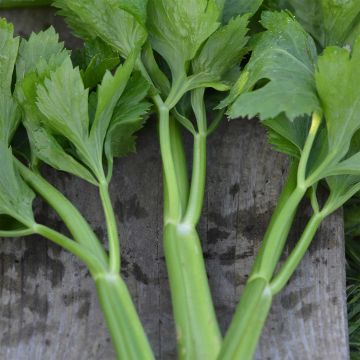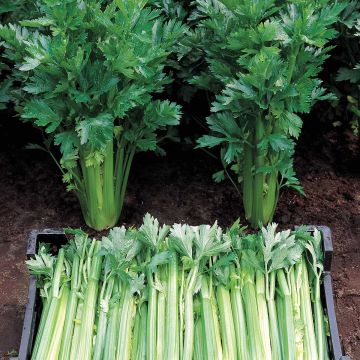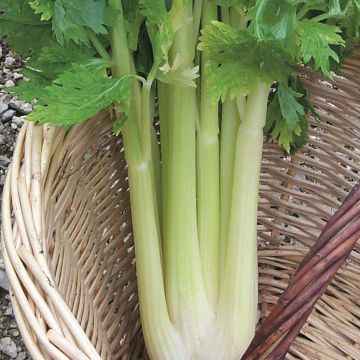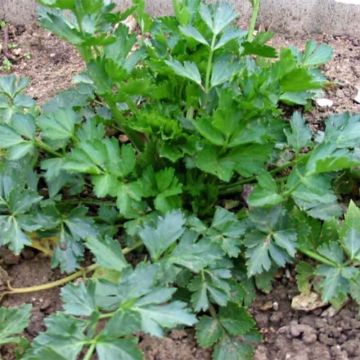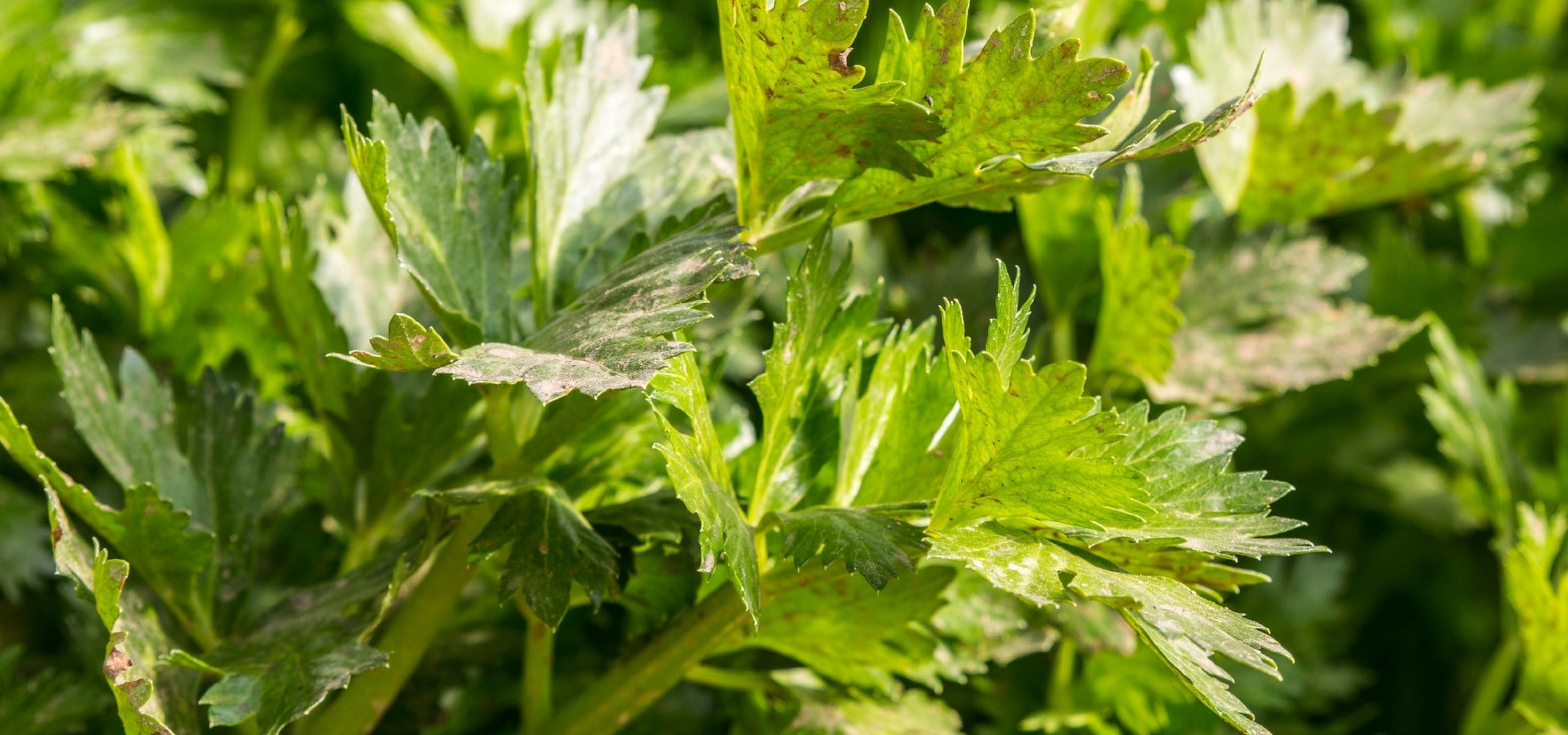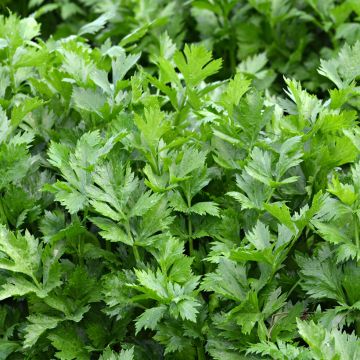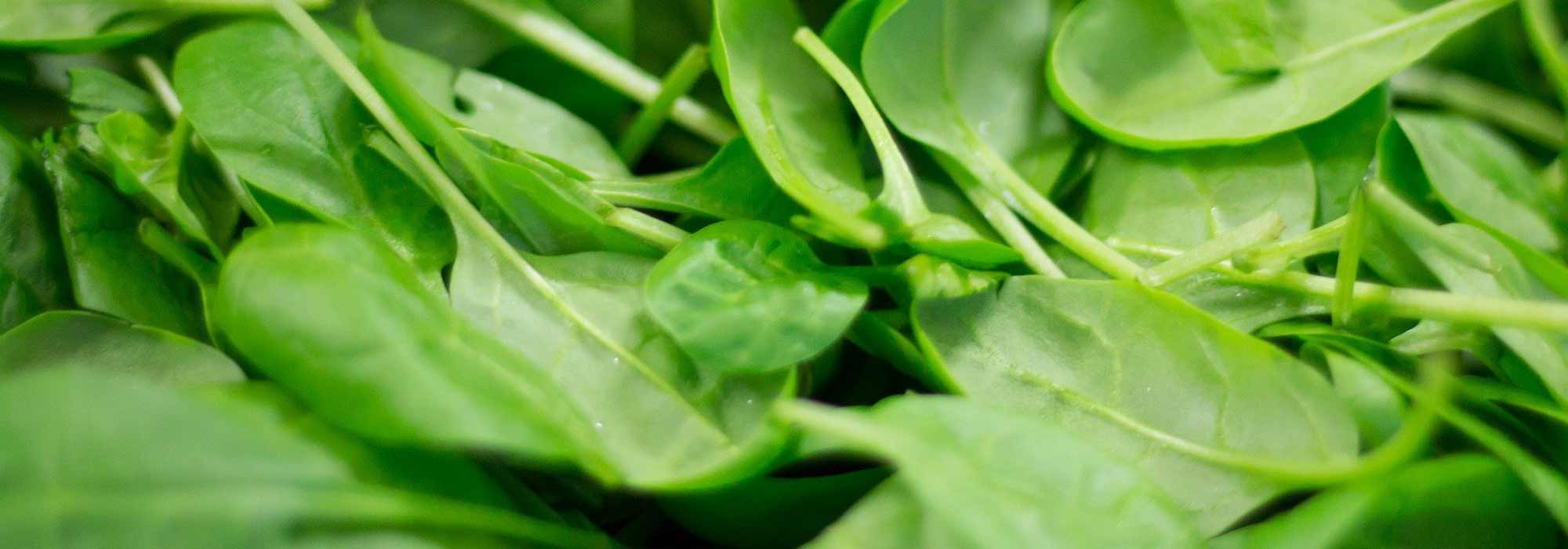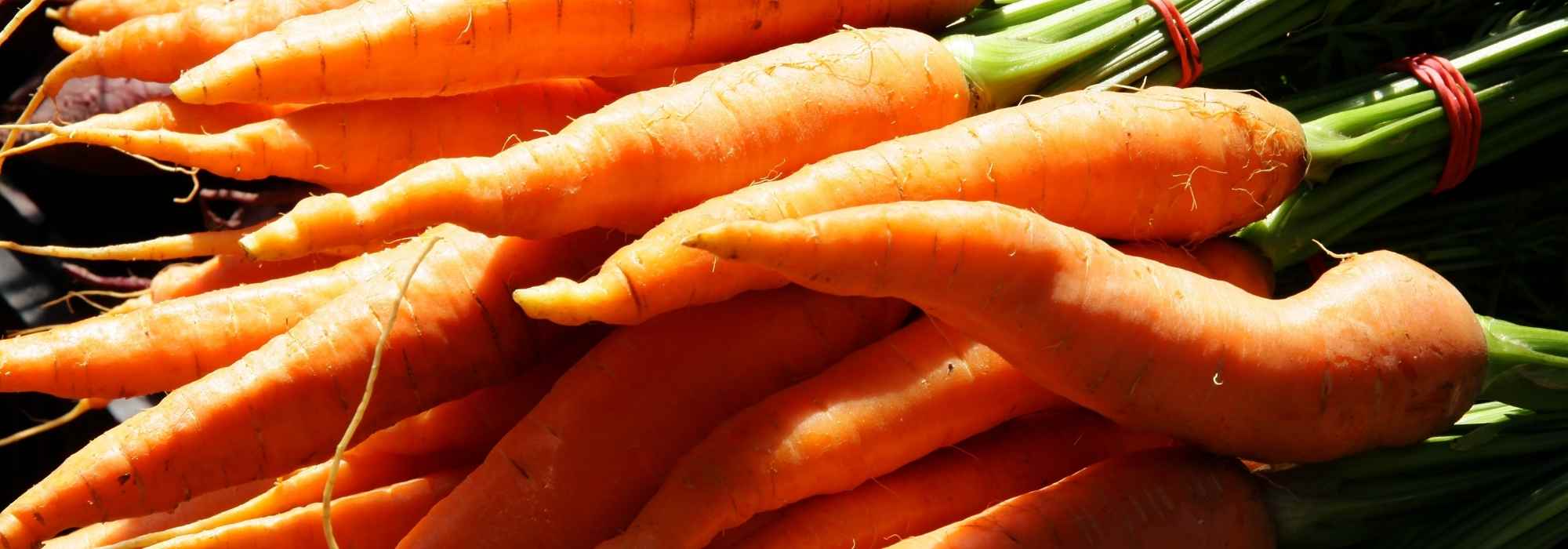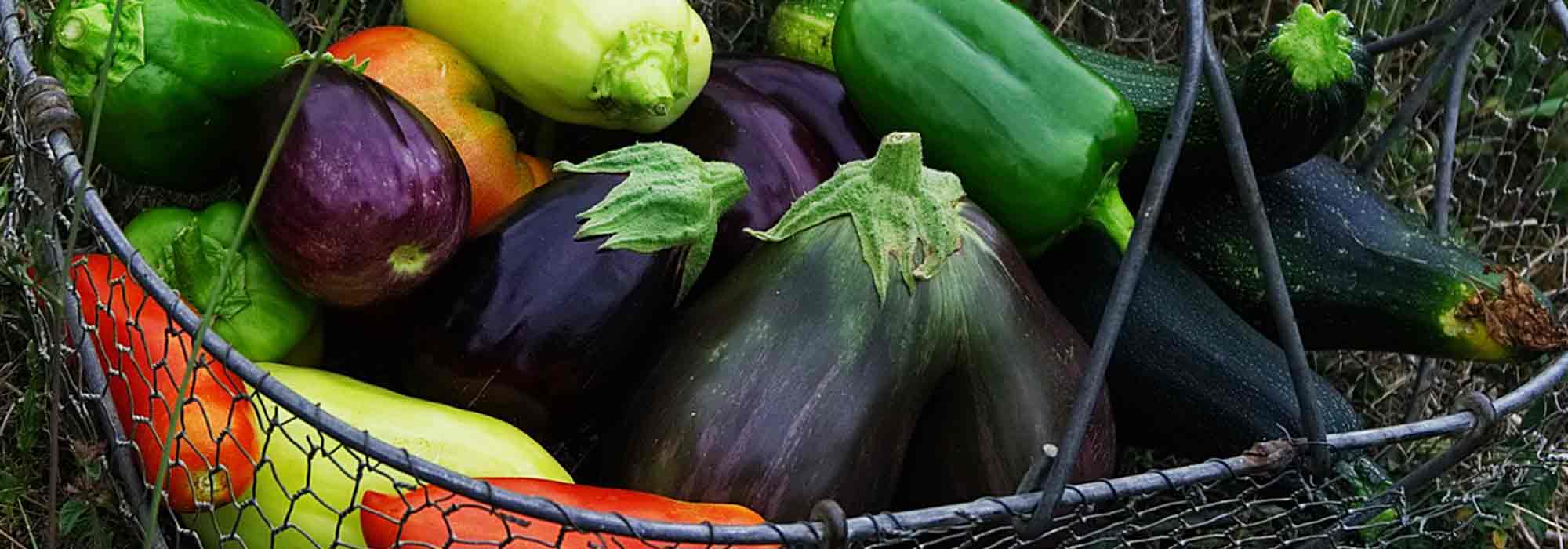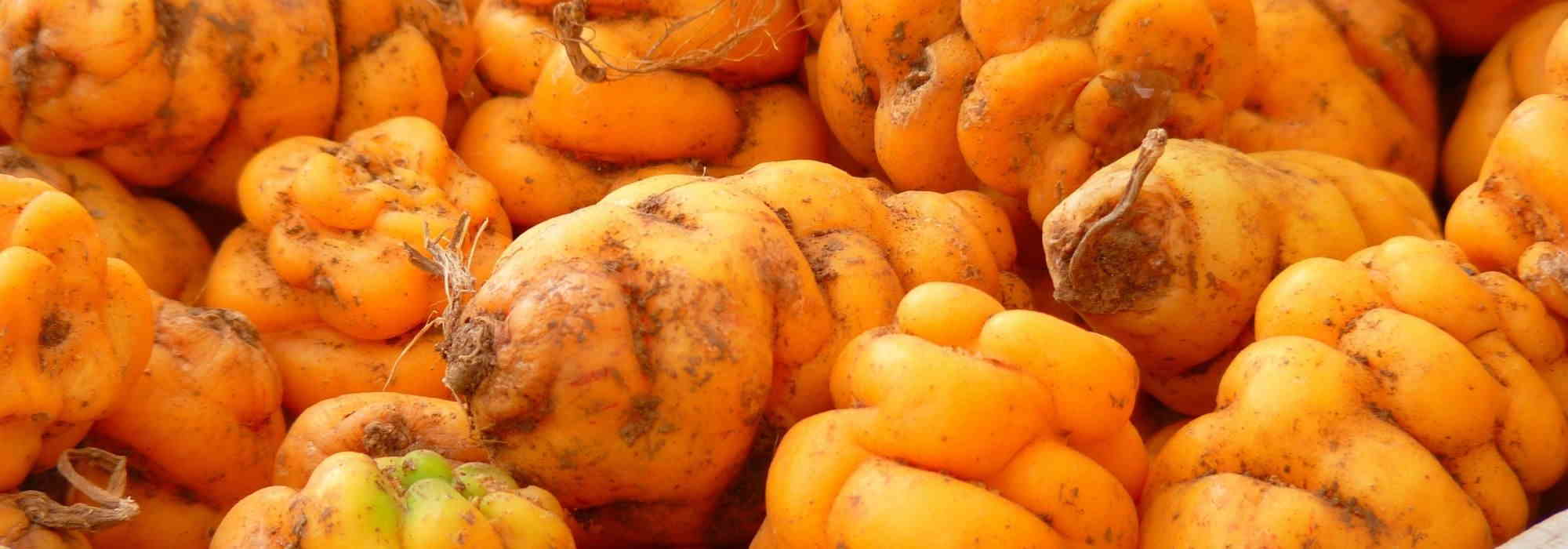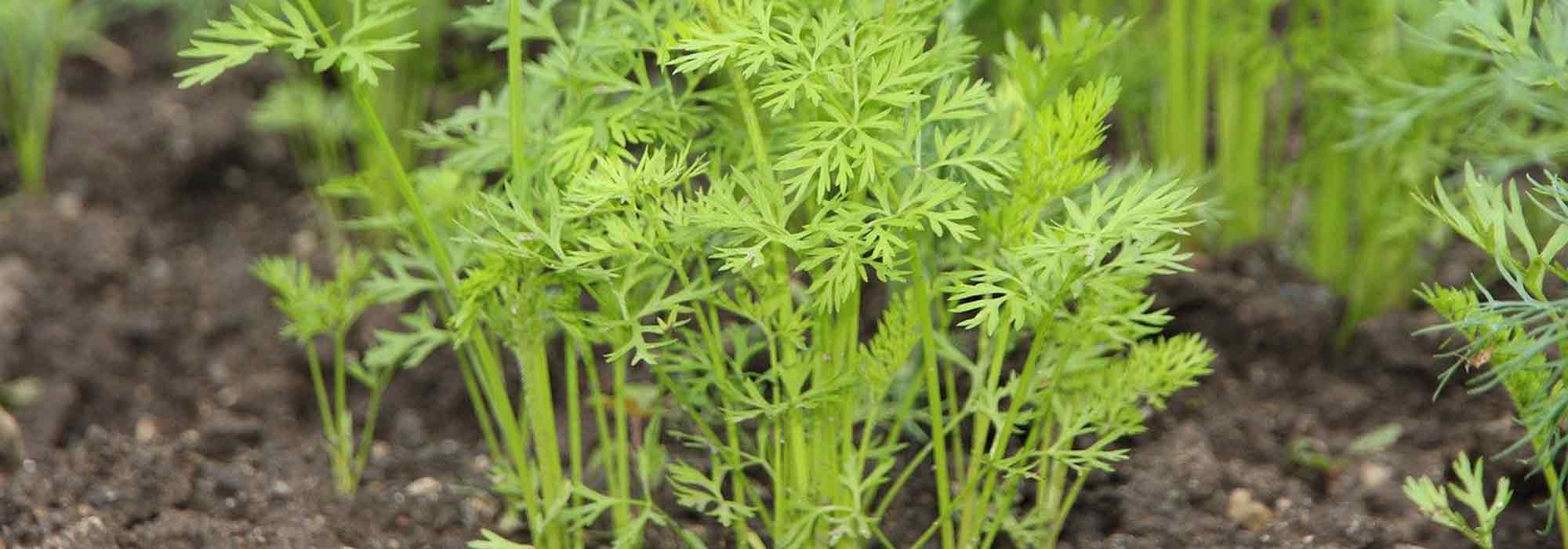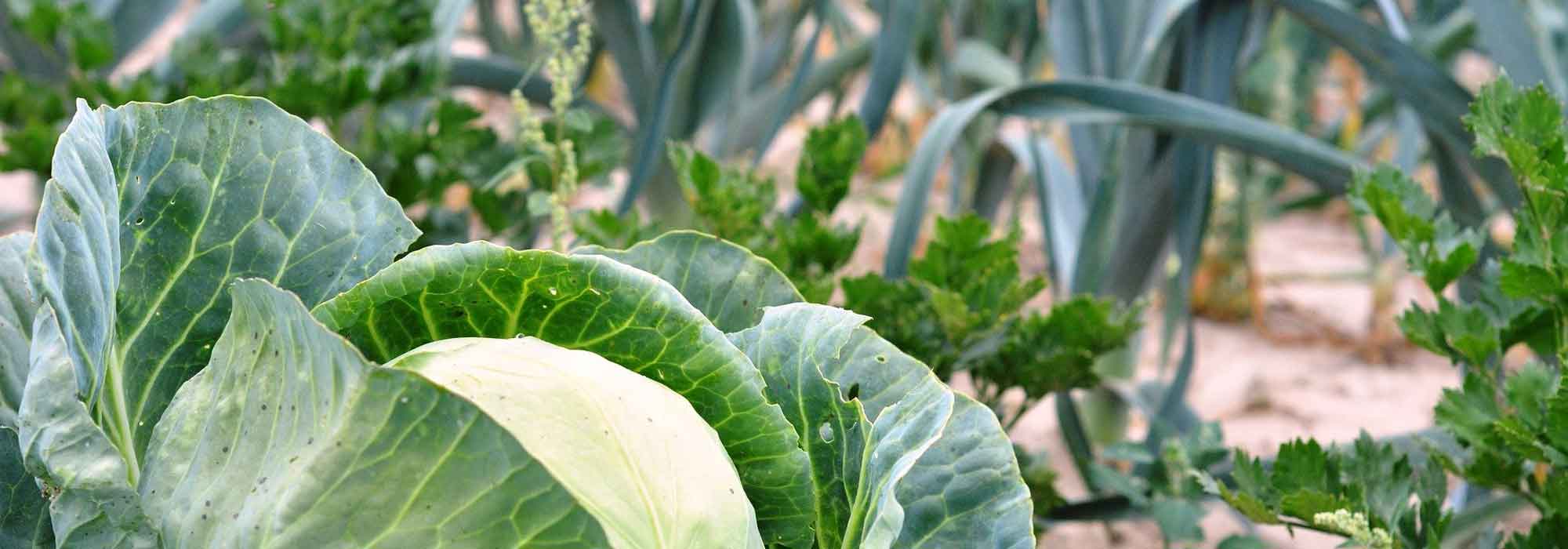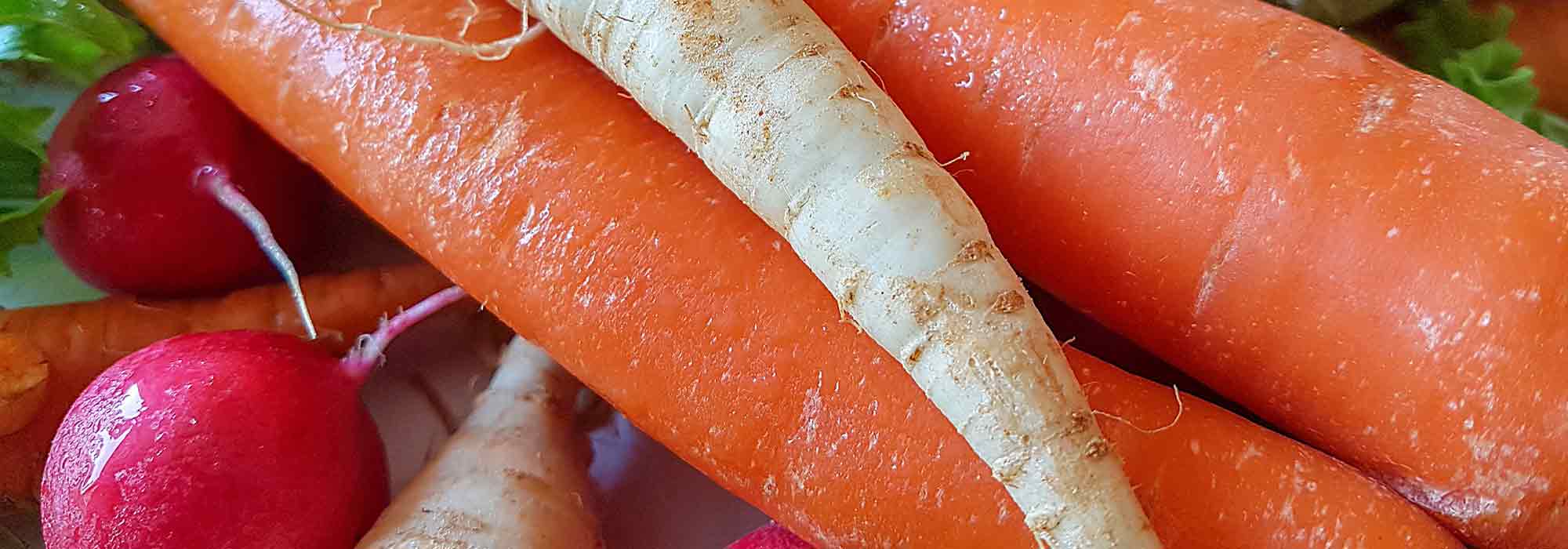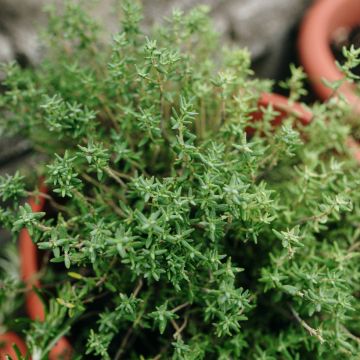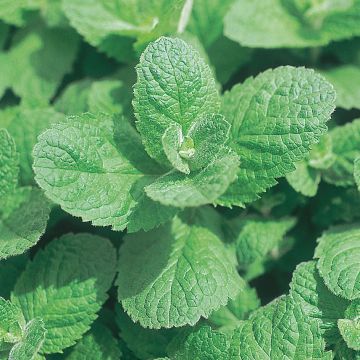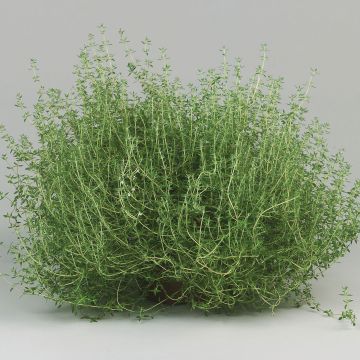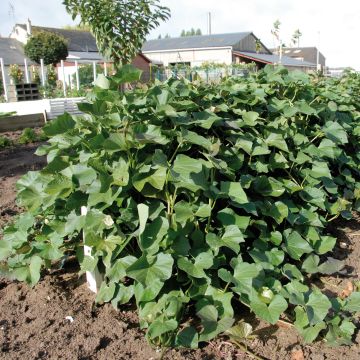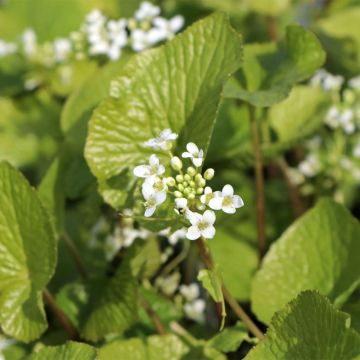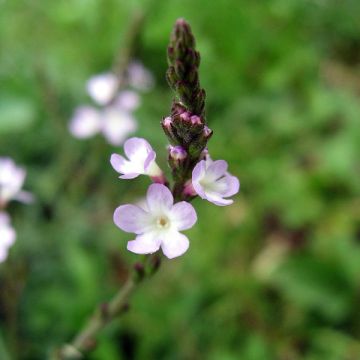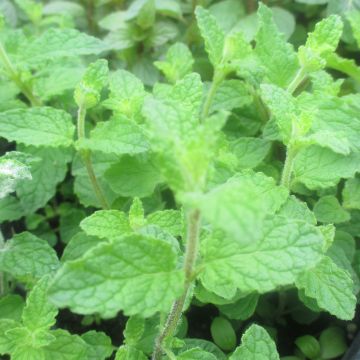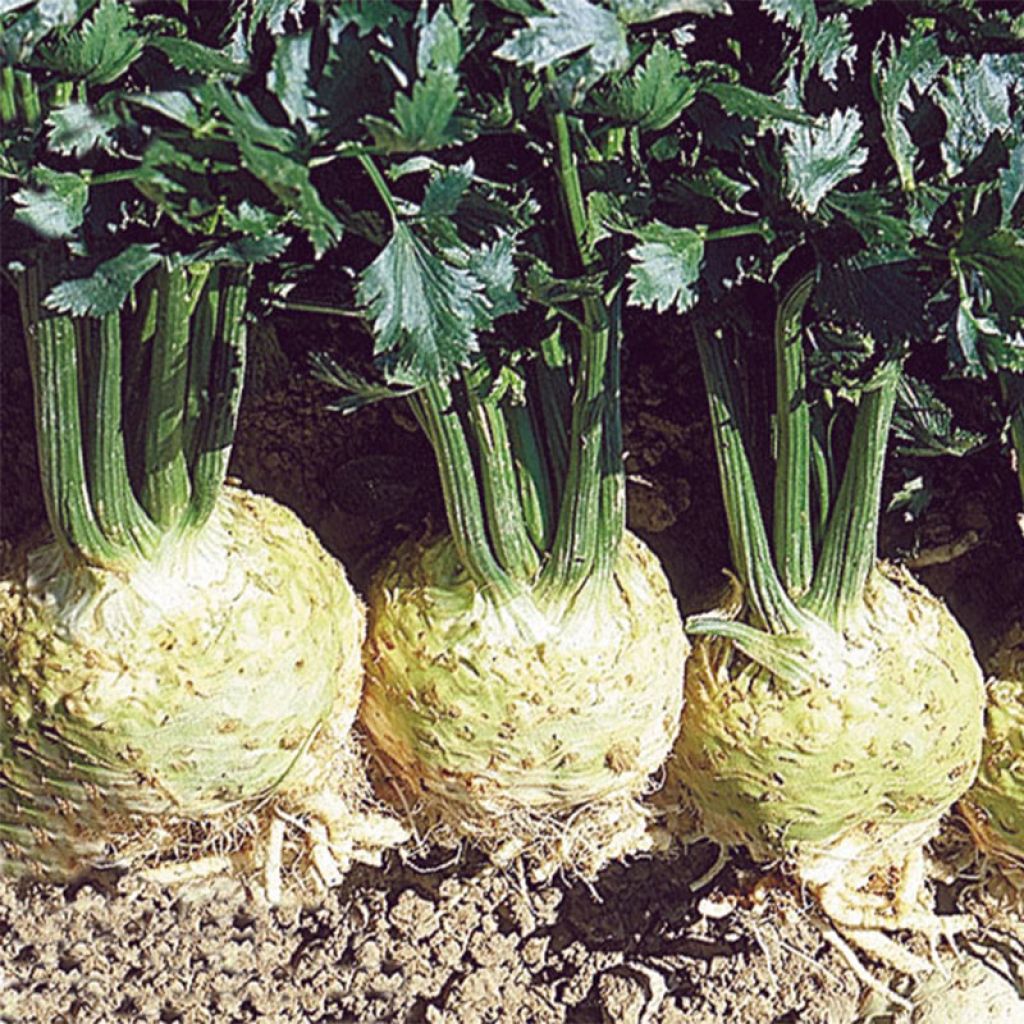

Monarch celeriac plants - Apium graveolens
Monarch celeriac plants - Apium graveolens
Apium graveolens rapaceum Monarch
Celeriac
Received in good condition and after transferring them into a larger pot, they are growing well after 10 days.
Nicolas, 06/04/2022
Special offer!
Receive a €20 voucher for any order over €90 (excluding delivery costs, credit notes, and plastic-free options)!
1- Add your favorite plants to your cart.
2- Once you have reached €90, confirm your order (you can even choose the delivery date!).
3- As soon as your order is shipped, you will receive an email containing your voucher code, valid for 3 months (90 days).
Your voucher is unique and can only be used once, for any order with a minimum value of €20, excluding delivery costs.
Can be combined with other current offers, non-divisible and non-refundable.
Why not try an alternative variety in stock?
View all →This plant carries a 6 months recovery warranty
More information
We guarantee the quality of our plants for a full growing cycle, and will replace at our expense any plant that fails to recover under normal climatic and planting conditions.

Description
The 'Monarch' Celeriac is a semi-early variety, well-suited for storage. It produces large round roots with highly fragrant white flesh. Celeriac is appreciated for its pungent taste. It is ideal for raw consumption in remoulade or for cooking in winter dishes. The young plants of this variety are planted from April to June, after the last frost, for a harvest in autumn.
Celeriac is a vegetable from the Apiaceae family (formerly Umbelliferae) and comes in various forms. The most common are celeriac, celery, and cutting celery. These three types of celery originate from the same plant, marsh parsley. The latter is a hardy perennial plant, native to Mediterranean countries, and is also known as perpetual celery.
In terms of cooking, celeriac is cultivated for its large round root with a pungent flavour. It can be consumed raw (grated, in remoulade...) or cooked (in puree, gratin, or sauté). Celery is cultivated for its stalks, which are the main veins of its leaves. These can be eaten raw with salt, for example, or cooked to flavour soups or sauces. The leaves of cutting celery are similar to parsley and perfectly enhance soups or slow-cooked dishes. Celery is rich in vitamins, minerals, and low in calories.
In the vegetable garden, plant celery in a sunny or semi-shaded spot. It is a hardy plant that can reach 50 to 70 cm (20 to 28in) in height for celeriac and celery branches. Only cutting celery is shorter and can be grown in a pot.
Harvesting: For celery and cutting celery, pick the leaves at the base as needed, in autumn. Before winter frosts, you can completely remove the clump and store it in a cellar for several weeks. As for celeriac, it is harvested in autumn and before the first frosts. Dig up the roots, let them dry for a day on the ground, and cut the leaves above the collar as well as the rootlets.
Storage: The leaves of celery branch and cutting celery are best consumed fresh to fully enjoy their aroma. However, they can be dried and used as an aromatic plant or frozen. Celeriac bulbs should be stored in a cool, humid place, protected from light, and can be kept for several months.
Gardener's tip: To limit watering, we recommend, from late May, mulching the soil with thin successive layers of grass clippings, if possible mixed with dead leaves. This protection, which keeps the soil moist, also reduces weed growth.
Harvest
Plant habit
Foliage
Other Celery
View all →Planting and care
Celery prefers fresh, light, and rich soils. In the previous autumn, apply well-rotted compost after loosening the soil. Choose a sunny or partially shaded location.
Planting:
Initially, grow the plug plants by transplanting them into trays or pots measuring 8 to 13 cm (3 to 5in) in diameter, filled with potting soil. Place them in a warm and bright location. Water regularly.
Planting in the ground should be done from mid-May to June, when the risk of frost has passed. Space the plants 35 cm (14in) apart in all directions. Soak the roots in water for a few moments before planting. Dig a hole, place the plant, and cover with fine soil. Water thoroughly.
During cultivation, provide vegetable fertiliser as celery requires ample nutrients. Regularly weed and hoe. Mulch around the base to maintain soil moisture. Water regularly, especially during hot weather. Avoid watering in the late afternoon to minimise the risk of diseases.
Stem celery and cutting celery: Two weeks before harvest, the leaves need to be blanched. Blanch the plants as needed by depriving them of light, causing the leaves to turn white as photosynthesis cannot occur. This will make them more tender. When the leaves are completely dry, gather them towards the center and tie them loosely with string. Ensure proper air circulation. Surround them with thick cardboard, leaving only the top of the leaves exposed. Hill up the plants. After 2 to 3 weeks, uncover the leaves and cut them just above the collar.
Celeriac: When it is well-formed, cut off the aerial rootlets.
Wait 4 years before cultivating celery in the same spot.
Cultivation
Care
Intended location
Planting & care advice
-
, onOrder confirmed
Reply from on Promesse de fleurs
Similar products
Haven't found what you were looking for?
Hardiness is the lowest winter temperature a plant can endure without suffering serious damage or even dying. However, hardiness is affected by location (a sheltered area, such as a patio), protection (winter cover) and soil type (hardiness is improved by well-drained soil).

Photo Sharing Terms & Conditions
In order to encourage gardeners to interact and share their experiences, Promesse de fleurs offers various media enabling content to be uploaded onto its Site - in particular via the ‘Photo sharing’ module.
The User agrees to refrain from:
- Posting any content that is illegal, prejudicial, insulting, racist, inciteful to hatred, revisionist, contrary to public decency, that infringes on privacy or on the privacy rights of third parties, in particular the publicity rights of persons and goods, intellectual property rights, or the right to privacy.
- Submitting content on behalf of a third party;
- Impersonate the identity of a third party and/or publish any personal information about a third party;
In general, the User undertakes to refrain from any unethical behaviour.
All Content (in particular text, comments, files, images, photos, videos, creative works, etc.), which may be subject to property or intellectual property rights, image or other private rights, shall remain the property of the User, subject to the limited rights granted by the terms of the licence granted by Promesse de fleurs as stated below. Users are at liberty to publish or not to publish such Content on the Site, notably via the ‘Photo Sharing’ facility, and accept that this Content shall be made public and freely accessible, notably on the Internet.
Users further acknowledge, undertake to have ,and guarantee that they hold all necessary rights and permissions to publish such material on the Site, in particular with regard to the legislation in force pertaining to any privacy, property, intellectual property, image, or contractual rights, or rights of any other nature. By publishing such Content on the Site, Users acknowledge accepting full liability as publishers of the Content within the meaning of the law, and grant Promesse de fleurs, free of charge, an inclusive, worldwide licence for the said Content for the entire duration of its publication, including all reproduction, representation, up/downloading, displaying, performing, transmission, and storage rights.
Users also grant permission for their name to be linked to the Content and accept that this link may not always be made available.
By engaging in posting material, Users consent to their Content becoming automatically accessible on the Internet, in particular on other sites and/or blogs and/or web pages of the Promesse de fleurs site, including in particular social pages and the Promesse de fleurs catalogue.
Users may secure the removal of entrusted content free of charge by issuing a simple request via our contact form.
The flowering period indicated on our website applies to countries and regions located in USDA zone 8 (France, the United Kingdom, Ireland, the Netherlands, etc.)
It will vary according to where you live:
- In zones 9 to 10 (Italy, Spain, Greece, etc.), flowering will occur about 2 to 4 weeks earlier.
- In zones 6 to 7 (Germany, Poland, Slovenia, and lower mountainous regions), flowering will be delayed by 2 to 3 weeks.
- In zone 5 (Central Europe, Scandinavia), blooming will be delayed by 3 to 5 weeks.
In temperate climates, pruning of spring-flowering shrubs (forsythia, spireas, etc.) should be done just after flowering.
Pruning of summer-flowering shrubs (Indian Lilac, Perovskia, etc.) can be done in winter or spring.
In cold regions as well as with frost-sensitive plants, avoid pruning too early when severe frosts may still occur.
The planting period indicated on our website applies to countries and regions located in USDA zone 8 (France, United Kingdom, Ireland, Netherlands).
It will vary according to where you live:
- In Mediterranean zones (Marseille, Madrid, Milan, etc.), autumn and winter are the best planting periods.
- In continental zones (Strasbourg, Munich, Vienna, etc.), delay planting by 2 to 3 weeks in spring and bring it forward by 2 to 4 weeks in autumn.
- In mountainous regions (the Alps, Pyrenees, Carpathians, etc.), it is best to plant in late spring (May-June) or late summer (August-September).
The harvesting period indicated on our website applies to countries and regions in USDA zone 8 (France, England, Ireland, the Netherlands).
In colder areas (Scandinavia, Poland, Austria...) fruit and vegetable harvests are likely to be delayed by 3-4 weeks.
In warmer areas (Italy, Spain, Greece, etc.), harvesting will probably take place earlier, depending on weather conditions.
The sowing periods indicated on our website apply to countries and regions within USDA Zone 8 (France, UK, Ireland, Netherlands).
In colder areas (Scandinavia, Poland, Austria...), delay any outdoor sowing by 3-4 weeks, or sow under glass.
In warmer climes (Italy, Spain, Greece, etc.), bring outdoor sowing forward by a few weeks.






























